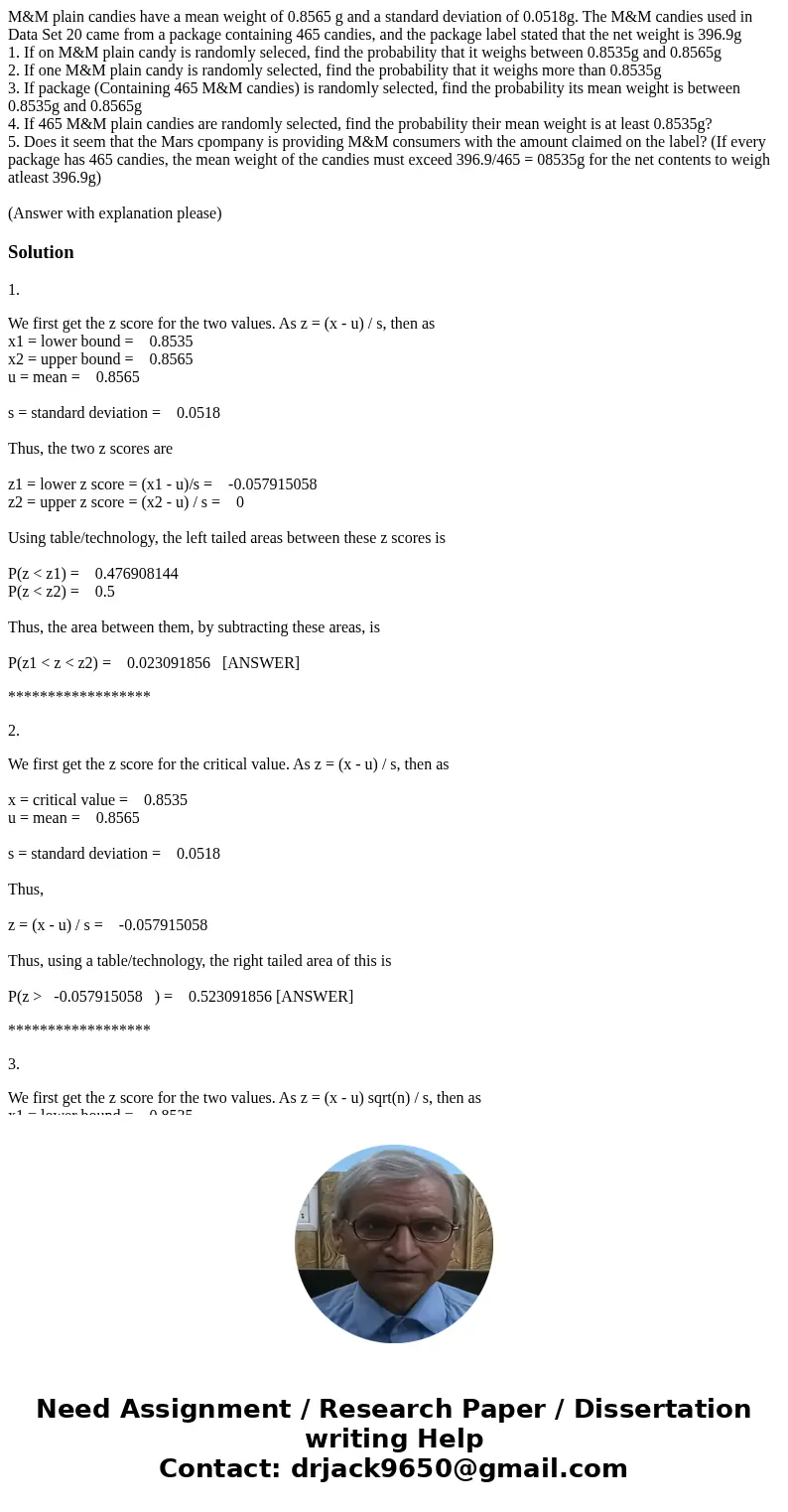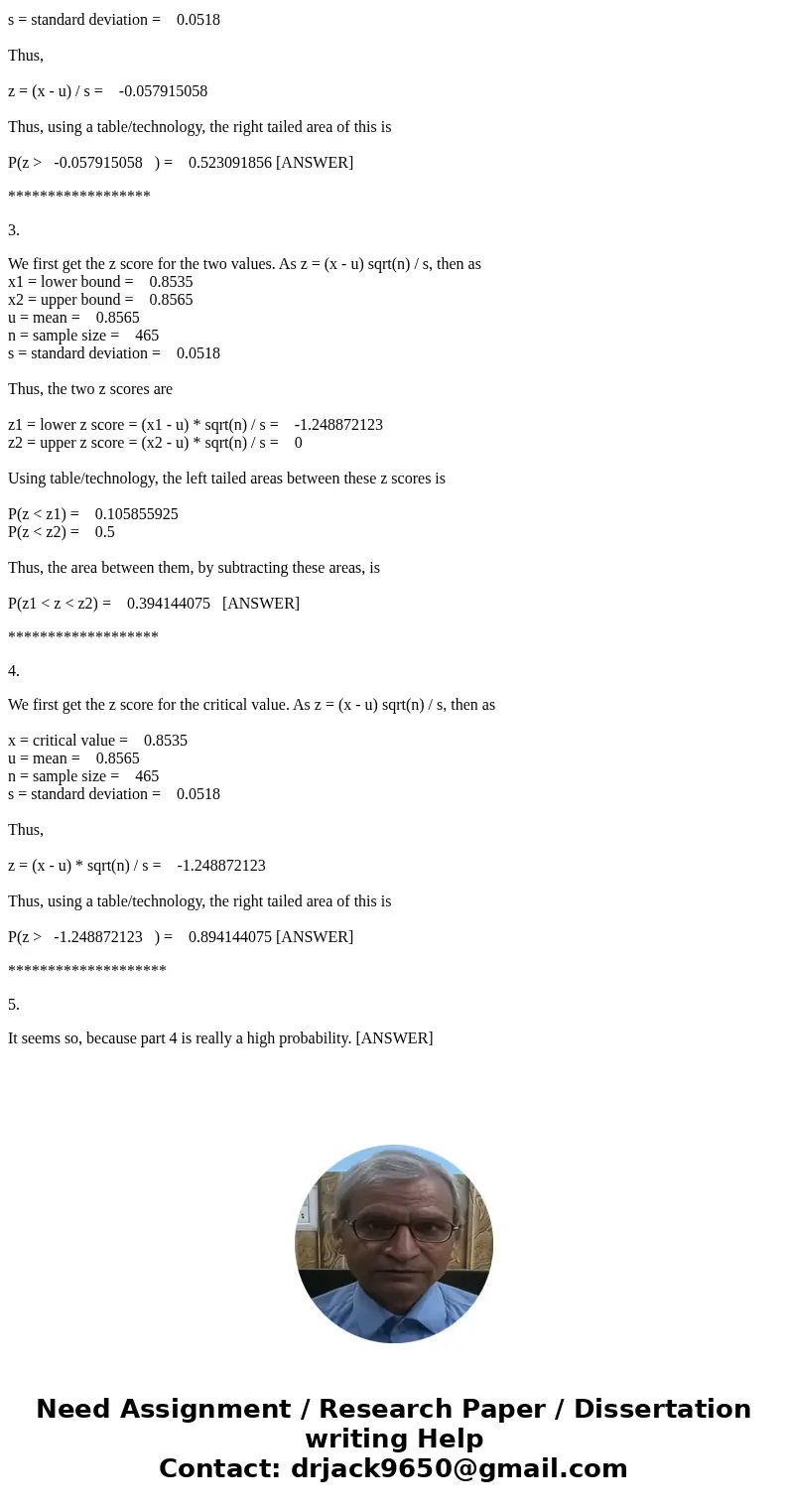MM plain candies have a mean weight of 08565 g and a standar
M&M plain candies have a mean weight of 0.8565 g and a standard deviation of 0.0518g. The M&M candies used in Data Set 20 came from a package containing 465 candies, and the package label stated that the net weight is 396.9g
1. If on M&M plain candy is randomly seleced, find the probability that it weighs between 0.8535g and 0.8565g
2. If one M&M plain candy is randomly selected, find the probability that it weighs more than 0.8535g
3. If package (Containing 465 M&M candies) is randomly selected, find the probability its mean weight is between 0.8535g and 0.8565g
4. If 465 M&M plain candies are randomly selected, find the probability their mean weight is at least 0.8535g?
5. Does it seem that the Mars cpompany is providing M&M consumers with the amount claimed on the label? (If every package has 465 candies, the mean weight of the candies must exceed 396.9/465 = 08535g for the net contents to weigh atleast 396.9g)
(Answer with explanation please)
Solution
1.
We first get the z score for the two values. As z = (x - u) / s, then as
x1 = lower bound = 0.8535
x2 = upper bound = 0.8565
u = mean = 0.8565
s = standard deviation = 0.0518
Thus, the two z scores are
z1 = lower z score = (x1 - u)/s = -0.057915058
z2 = upper z score = (x2 - u) / s = 0
Using table/technology, the left tailed areas between these z scores is
P(z < z1) = 0.476908144
P(z < z2) = 0.5
Thus, the area between them, by subtracting these areas, is
P(z1 < z < z2) = 0.023091856 [ANSWER]
******************
2.
We first get the z score for the critical value. As z = (x - u) / s, then as
x = critical value = 0.8535
u = mean = 0.8565
s = standard deviation = 0.0518
Thus,
z = (x - u) / s = -0.057915058
Thus, using a table/technology, the right tailed area of this is
P(z > -0.057915058 ) = 0.523091856 [ANSWER]
******************
3.
We first get the z score for the two values. As z = (x - u) sqrt(n) / s, then as
x1 = lower bound = 0.8535
x2 = upper bound = 0.8565
u = mean = 0.8565
n = sample size = 465
s = standard deviation = 0.0518
Thus, the two z scores are
z1 = lower z score = (x1 - u) * sqrt(n) / s = -1.248872123
z2 = upper z score = (x2 - u) * sqrt(n) / s = 0
Using table/technology, the left tailed areas between these z scores is
P(z < z1) = 0.105855925
P(z < z2) = 0.5
Thus, the area between them, by subtracting these areas, is
P(z1 < z < z2) = 0.394144075 [ANSWER]
*******************
4.
We first get the z score for the critical value. As z = (x - u) sqrt(n) / s, then as
x = critical value = 0.8535
u = mean = 0.8565
n = sample size = 465
s = standard deviation = 0.0518
Thus,
z = (x - u) * sqrt(n) / s = -1.248872123
Thus, using a table/technology, the right tailed area of this is
P(z > -1.248872123 ) = 0.894144075 [ANSWER]
********************
5.
It seems so, because part 4 is really a high probability. [ANSWER]


 Homework Sourse
Homework Sourse